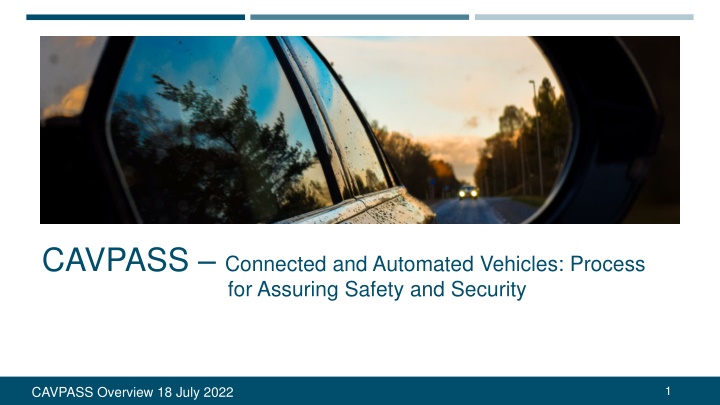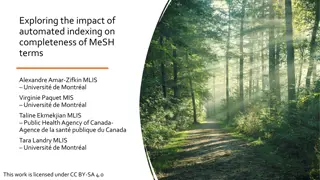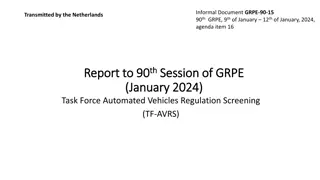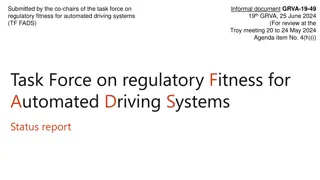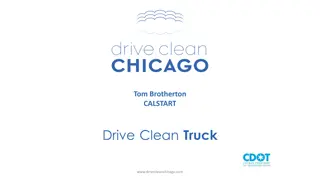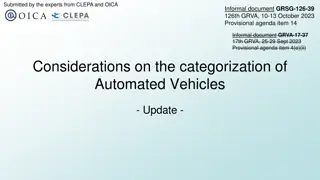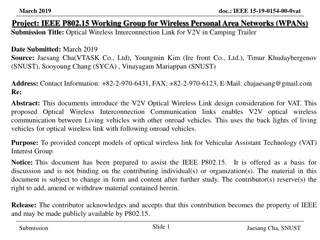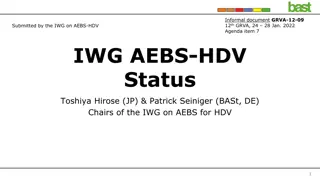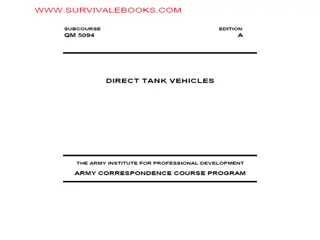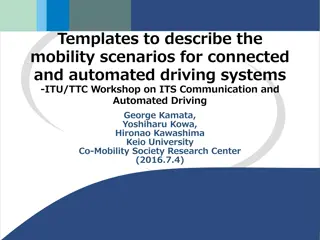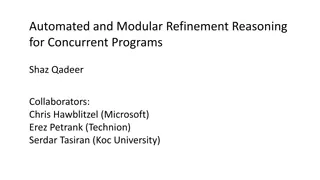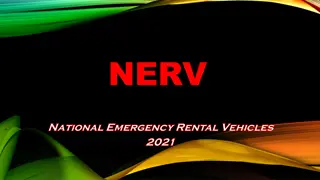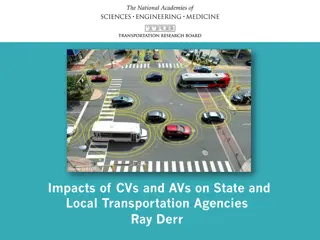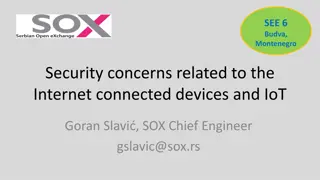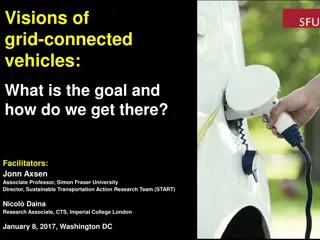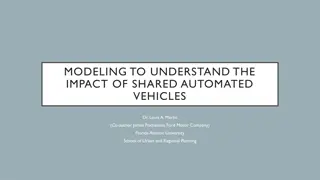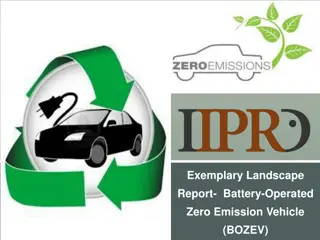Ensuring Safety and Security for Connected and Automated Vehicles - CAVPASS Overview
CAVPASS aims to develop safety and security processes for connected and automated vehicles (CAVs) in the UK by 2025. The program focuses on assuring the safety and cyber resilience of CAVs throughout their lifecycle, identifying critical elements in design, deployment, and use. It involves multiple organizations across the transport sector to achieve the vision of safe CAVs on UK roads. The initiative addresses the need for new processes, assessment, audit, approval, and monitoring to ensure road safety and cyber security, providing regulatory flexibility and innovation opportunities in the CAV industry.
Download Presentation

Please find below an Image/Link to download the presentation.
The content on the website is provided AS IS for your information and personal use only. It may not be sold, licensed, or shared on other websites without obtaining consent from the author.If you encounter any issues during the download, it is possible that the publisher has removed the file from their server.
You are allowed to download the files provided on this website for personal or commercial use, subject to the condition that they are used lawfully. All files are the property of their respective owners.
The content on the website is provided AS IS for your information and personal use only. It may not be sold, licensed, or shared on other websites without obtaining consent from the author.
E N D
Presentation Transcript
CAVPASS Connected and Automated Vehicles: Process for Assuring Safety and Security 1 CAVPASS Overview 18 July 2022
New CAV safety and security assurance processes by 2025 to enable CAVs and improve our strong road safety record. Connected and automated technology will be implemented into commercially available vehicles. Potential benefits for safety, productivity and access to transport. However they also bring new risks. The UK is working to develop policy and regulation for automated vehicles to be at the forefront of the sector. Opportunities to take advantage of new, independent status outside the EU, providing greater regulatory flexibility and developing standards for automated vehicles. Supports innovation in the UK CAV industry, bringing new technology developments and earlier UK deployment. To progress to the next stage, organisations may need exemptions from current technical or use regulations and, in the longer term, changes to those regulations. In due course, longer term safety considerations such as how to ensure roadworthiness of CAVs, or how to ensure drivers use and interact with them safely, must also be addressed. 2
The CAVPASS programme aims to develop these processes Vision: Government is confident that CAVs on UK roads are safe and cyber resilient. Aim: To assure the safety and cyber security of CAVs in the UK, and through-out their life-cycle, by 2025. Objective: To identify those elements of CAV design, deployment and use that are critical to road safety and cyber security and which require Government assessment, audit, approval and/or monitoring, and to design and implement new processes to achieve the required aim. In scope Out of scope Connected and automated vehicles Advanced trials & commercial deployment All road vehicle types Whole vehicle life: development, manufacture, use, and potentially end of life / disposal Standards, approvals, in-service testing, monitoring Government skills development Ensuring access to testing and approvals infrastructure Identifying regulatory barriers Informing regulatory change Advanced Driver Assistance Systems (ADAS) Non-road vehicles Industry skills development Industry testing and approvals infrastructure Regulatory change (being taken forward elsewhere in CCAV) Delivery of business as usual, approvals and testing 3
CAVPASS is delivered across transport sector CCAV Centre for Connected and Autonomous Vehicles RSD - Road Safety Division IVS International Vehicle Standards VCA Vehicle Certification Agency DVSA Driver and Vehicle Standards Agency DVLA Driver and Vehicle Licensing Agency FOLR - Freight, Operator Licensing and Roadworthiness (MoT Policy) T & T Traffic and Technology (infrastructure and connectedness) NCSC National Centre for Cyber Security TSRR - Transport Security, Resilience and Response RSD TSRR IVS NCSC VCA CAVPASS virtual team T&T CCAV FOLR DVSA DVLA 4
CAVPASS workstreams Workstream Vehicle approval & in-service compliance 1 Authorisation 2 Safe use 3 Enablers and Implementation 4 5 6 Trials Cyber security & data 5
Workstream 1: Vehicle approval & in-service compliance ADS approval (incl. Verification &Validation) Core topics: Codified behavioural ruleset (ie digital highway code) Scenario generation, selection and coverage (incl. Safety Pool) Non-ADS (ie physical) vehicle requirements In-use safety monitoring of ADS Transition Demands (technical aspects) Minimal Risk Manoeuvres and Minimal Risk Conditions 6
Workstream 2: Authorisation Authorised Self-Driving Entity (ASDE) registration Core topics: Deployment conditions Transition demands driver aspects Monitoring test Evidence for in-use regulation Safety documentation & Equality Impact Assessment Fees & admin process Appeals process 7
Workstream 3: Safe Use Passenger education on safety in Non-User-In-Charge vehicles Core topics: Driver & road user education & comms (linking to AV-Drive) Driver training, tests, & licences AV incident investigation (as part of Road Collision Investigation Branch) Future of the MOT Interaction between Avs and other road users (esp Vulnerable Road Users) Permitted UiC (User in Charge) activities Enforcement (and permissions) on the road by police / DVSA enforcement of new AV offences Insurance industry engagement (overview and coordination) 8
Workstream 4: Enablers & implementation In-use regulation Core topics: Agency skills (VCA, DVSA, DVLA) VCA testing capability DVSA enforcement capability MOT test facility systems DVLA database changes Data collection & storage implications Requirements will continue to be identified, scoped and refined as other workstreams progress. 9
Workstream 5: Trials Vehicle Technical Support for Trials Core topics: Independent Safety Case Audits Remote Driving Driver liability Operator Licensing Guidance Publication 10
Workstream 6: Cyber security and data Examine legal issues for testing Core topics: Identify additional cyber requirements Cyber forensics Market failures Cyber Code of Practice Data Code of Practice 11
Government-funded research projects Safety Pool Cyber resilience Interoperable simulation V2X services Consumer rating scheme Safe MRX Sensor assurance CAV safety and security assurance 12
"Advancing safely to full vehicle automation" competition CCAV-funded collaborate research and development competition run by Innovate UK Aiming to support the development of technologies to enable safe use of fully automated vehicles on UK roads. Direct feedback to safety and security assurance process development Successful projects totalling 3.2million. 13
Oversight of CAVPASS is managed through variety of mechanisms Governance of programme delivery is managed at variety of levels to reflect scope of delivery External advice and oversight from Expert Advisory Panel EAP is comprised of highly experienced experts from a variety of sectors, including: National highway management and development Academia and research AI industry Transportation foundation 14 CAVPASS Overview Presentation June 2022
